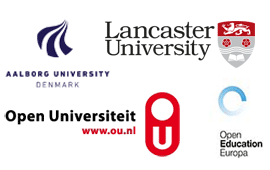

When we have never been human, what is to be done? Exploring posthumanism within the context of networked learning.
Ailsa Haxell, Auckland University of Technology
This paper contributes to the growing interest in a posthuman turn within education. While posthumanism has been of interest in the humanities and in social sciences, a lack of conceptualisation of posthumanism within networked learning has been to networked learning’s loss. In this paper, I engage with this concern throughresponding to a question posed by Donna Haraway, “When we have never been human, what is to be done?” In the first of three movements, I bring forward the very ordinariness of our posthuman condition. Conceptualising posthumanism as a very ordinary manifestation allows for conversations that need not wait for the arrival of, nor self-identification with, an exotic or semi-alien entity. There is no need to wait for some evolutionary manifestation involving some sense of advanced or superior beings. We need not wait on the arrival of some oddity. Taking, the very ordinariness of the posthuman condition as our common state, the second movement then brings forward appreciation for relationality. This second movement follows a logical progression from accepting ourselves as being made in association to seeing other entities as similarly co-constructed. This second movement positions technology as more than a mediator. Rather than technology being positioned as something we might use, technology is presented as an actor of influence both shaped and shaping. In the third movement, a more political stance is brought to designs for networked learning. A decentered approach to network learning allows not only for the influence of myriad actors to be traced but also provides a challenge for how the voices of quieter actors might be heard. Theorising networked learning and design for networked learning, begs the question as to whose stories are told and whose perhaps should be. In the telling of such stories, however, representation becomes a challenge: In whose language should such stories be told? Should a story be told in the in the storytellers “voice” or does it require the language a reader is accustomed to? In this short paper, I make use of an experimental method to bring forward the voice of an otherwise silent actor. In this particular telling, there is a playful provocation for a narrative told differently. With the ability to hear voices different to one’s own, a glimpse of realities different from one’s own might then be known.
Keywords
Actor-network theory, Posthuman, Networked learning
Joint Organising Institutions
| Conference Travel and Accommodation |Doctoral Consortium | Past Conference Proceedings | Contact |